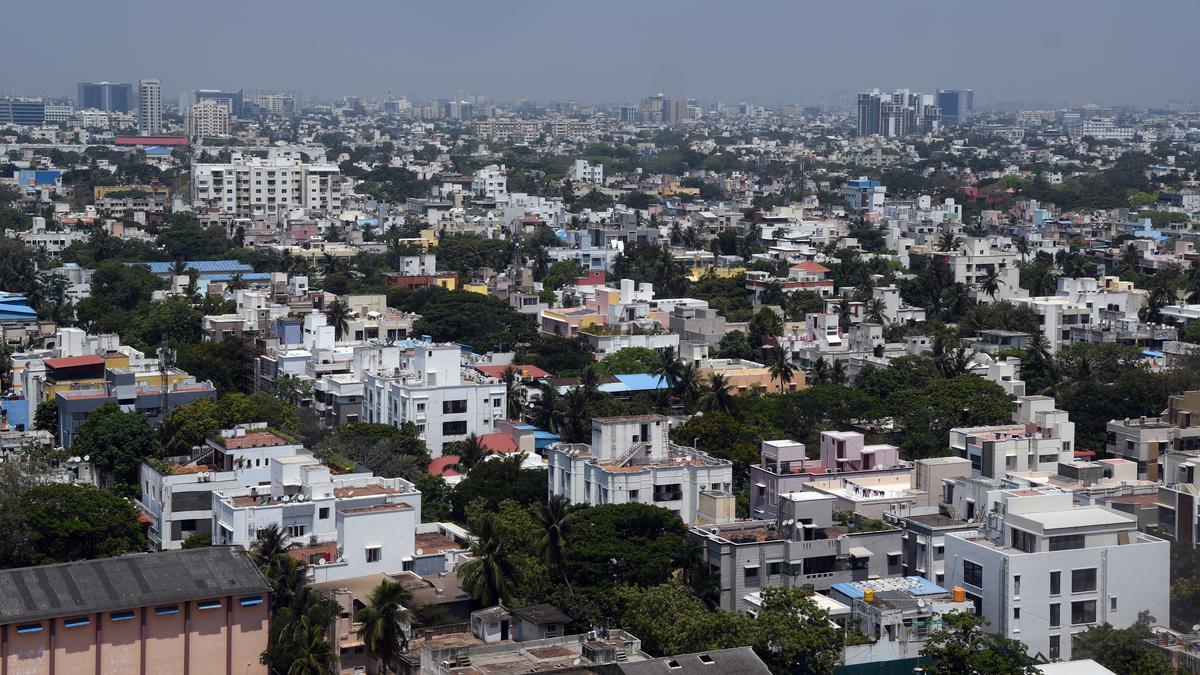
Study analysing employment categories as part of Chennai’s Third Master Plan to be completed soon
The Hindu
the CMDA said.CMDA to conclude study analysing spatial distribution of employment & income in expanded Chennai Metropolitan Area. Aim to identify priority areas & investment zones, apply statistical tools to ascertain economic activities & optimise land & resource usage. Report to review committee & nodal reporting point. Primary data collected through surveys & interviews, secondary data from sources, experts & industries.
The Chennai Metropolitan Development Authority (CMDA) is set to conclude its detailed study to analyse the spatial distribution of employment and income categories for covering the expanded Chennai Metropolitan Area (CMA) of 5,904 sq.km. This study, done during the 32-week assignment beginning April 1, is expected to be completed soon.
An official in the CMDA said the study would help identify priority areas and investment zones, not only in commercial sectors, but also in various other industries.
The CMDA said: “Chennai contributes to 8% of the State’s income. The core city contains the Madras Port Trust and Chennai Harbour, the Secretariat and other administrative centres. While manufacturing hubs have developed in peripheral areas, such as Orgadam and Sriperumbudur, software service clusters have come up along the IT corridor – Old Mahabalipuram Road – and places such as Tidel Park, Siruseri and many special economic zones. Chennai now has multiple business districts, and this dynamic within the city is not well understood due to the lack of disaggregated data.”
The study aims to identify spatial patterns of jobs and income distribution, encompassing both formal and informal sectors. The CMDA said appropriate statistical tools would be applied to ascertain place-specific economic activities, and these spatial indicators would be used to optimise the usage of land and other resources.
According to a 2013-14 report on Tamil Nadu’s district-level estimates by the Ministry of Labour and Employment, Chennai (District) had a lower labour force participation rate of 516 (per 1000 persons) compared to other urban areas. The unemployment rate in rural areas and urban areas were estimated to be 2.8% and 4.7% respectively, as per the report.
In Chennai district, the overall unemployment rate is 63% higher than the State’s average for urban areas. Statistically, women’s unemployment rate is 74% higher than the State’s average, while for men this is 51% above the average. This aligns with the theory that in cities with high potential wages, migration increases, but not everyone finds jobs due to higher reservation wages, CMDA said.
Chennai district has higher employment rates for those with better educational qualifications than other urban areas, yet, many postgraduates are not currently part of the workforce, it added. As per the 2011 Census, migrants constituted 28% of the district’s population, of which close to one-fifth migrated for employment or business purposes.





















 Run 3 Space | Play Space Running Game
Run 3 Space | Play Space Running Game Traffic Jam 3D | Online Racing Game
Traffic Jam 3D | Online Racing Game Duck Hunt | Play Old Classic Game
Duck Hunt | Play Old Classic Game











